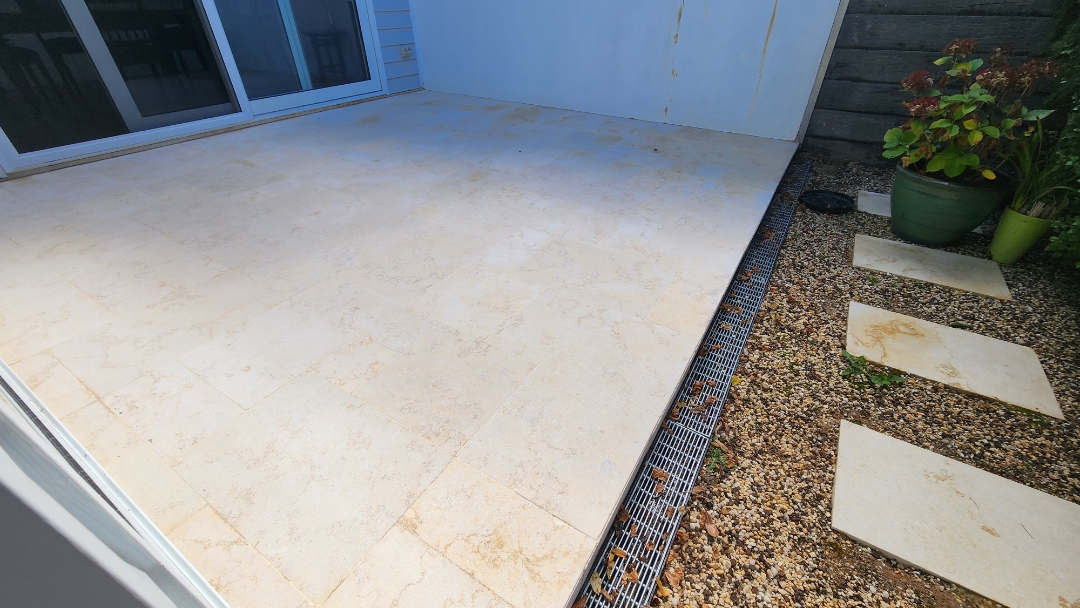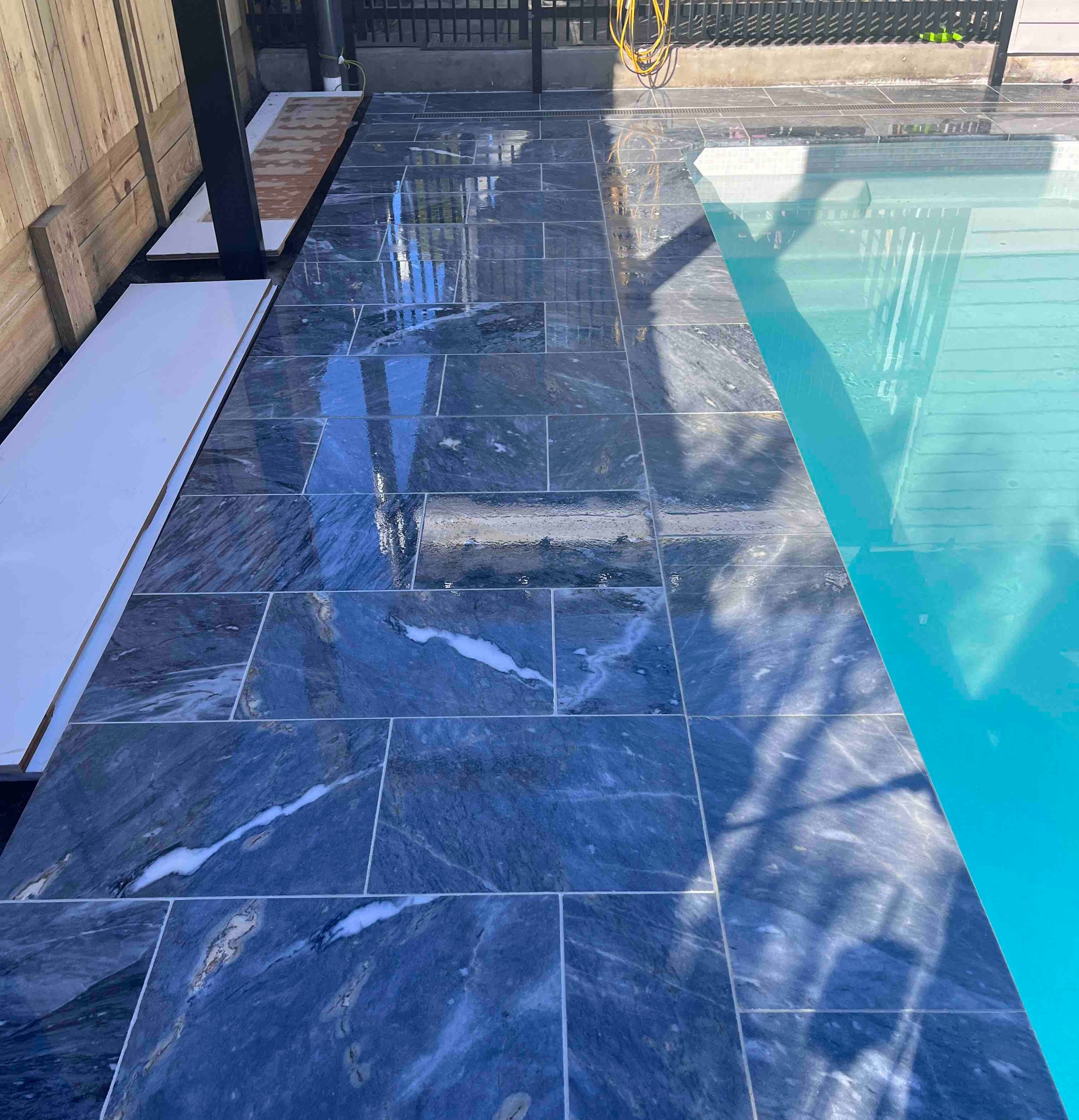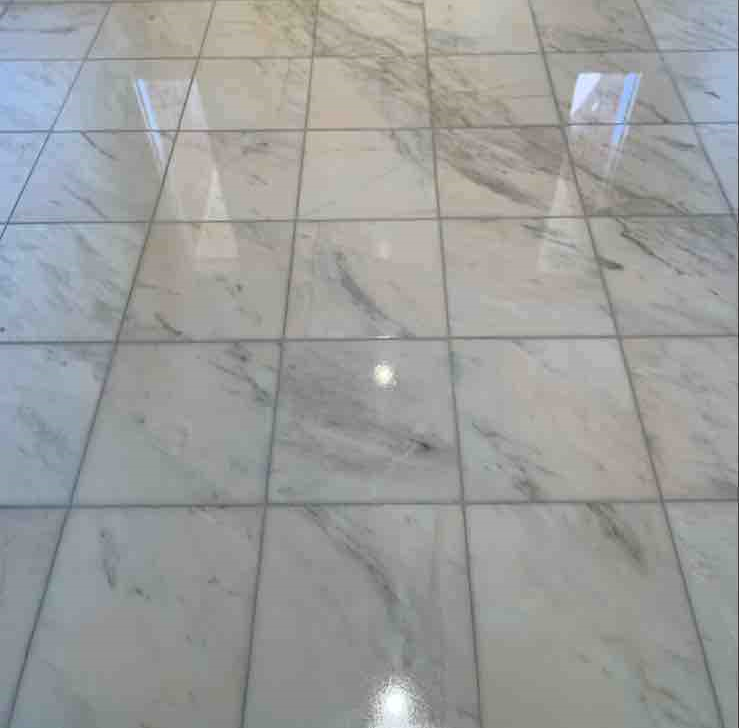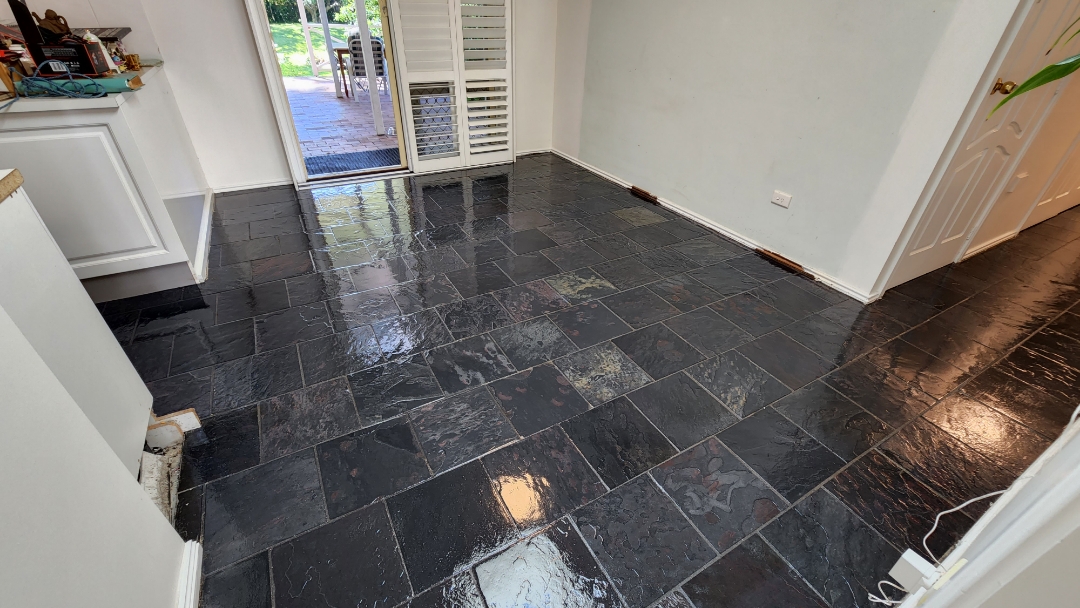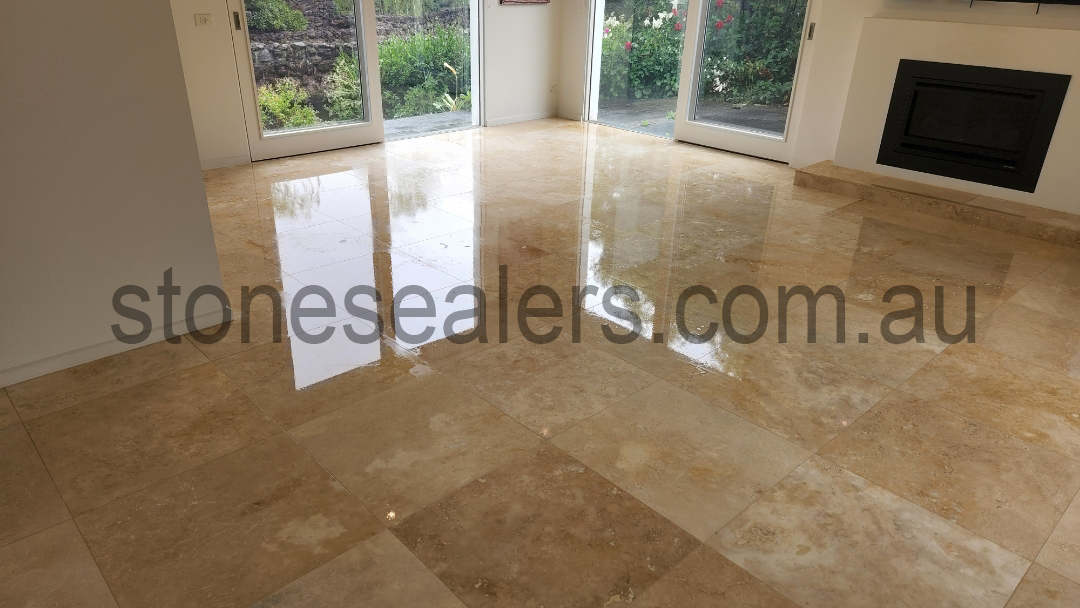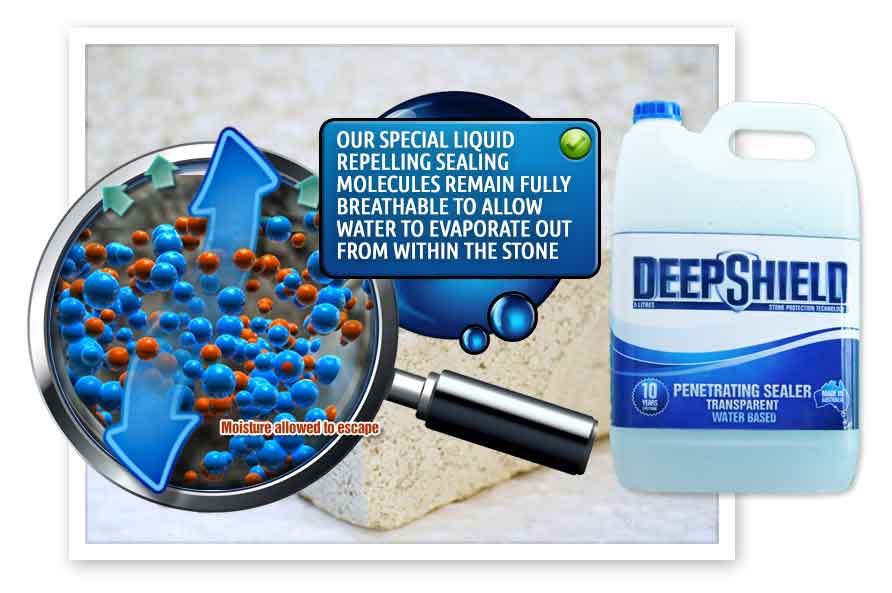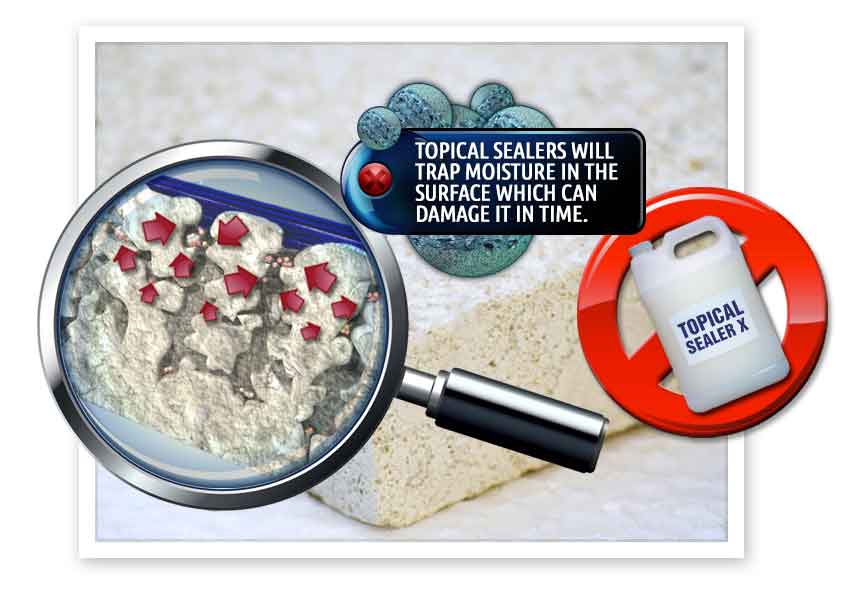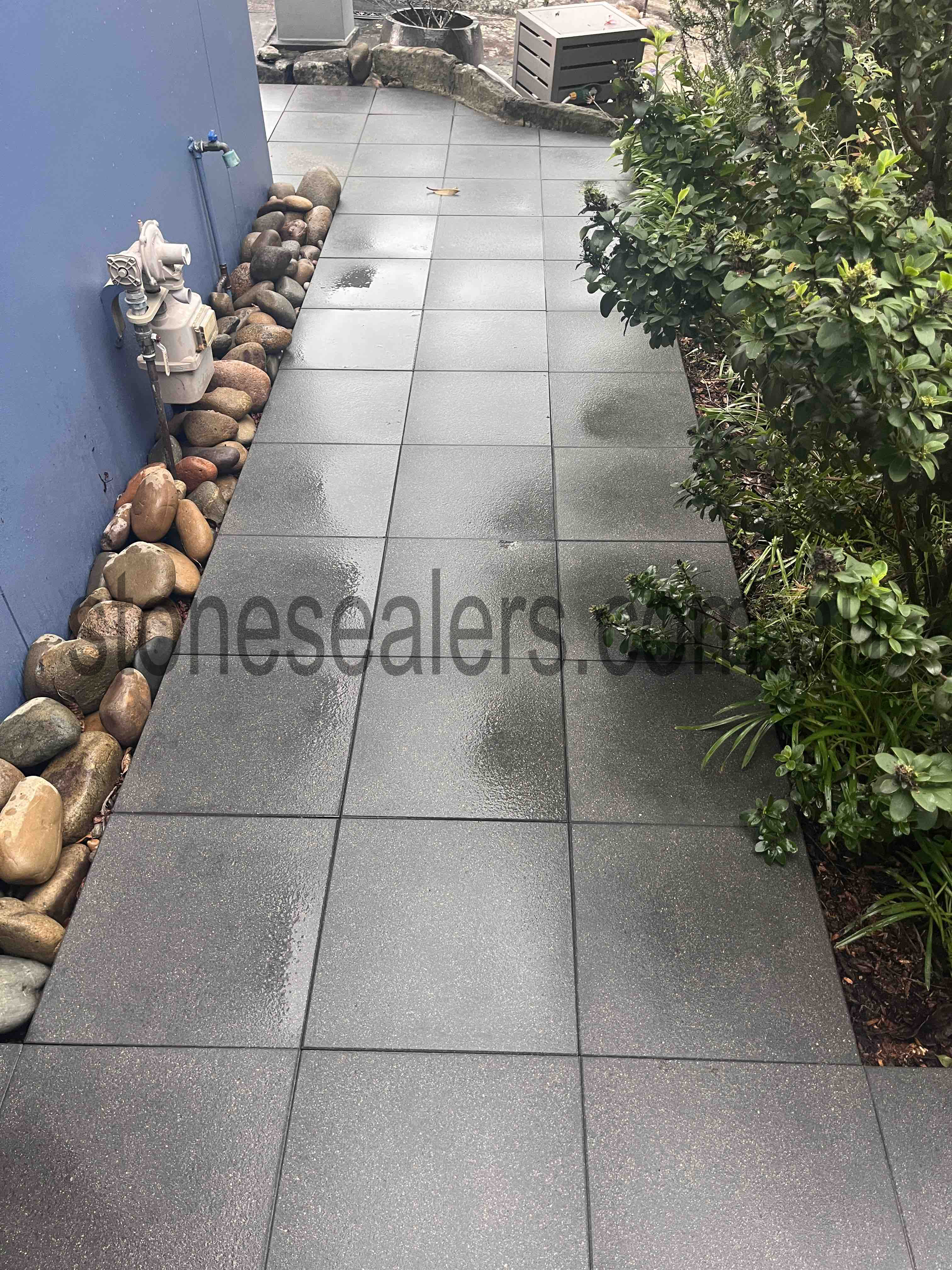Efflorescence appears as a crystalline deposit of salts, often appearing as a white, powdery residue on the surface of porous stone and masonry materials. It's a common issue associated with salt deposits.
The process involves water carrying dissolved salts penetrating the natural stone from all directions, moving through its pores to the surface. As the water evaporates, it leaves behind salt deposits. Initially, newly formed efflorescence can be relatively easy to remove with a dry brush. However, over time, these salts interact with atmospheric conditions and harden, requiring more intensive removal methods such as acid washing or grinding.
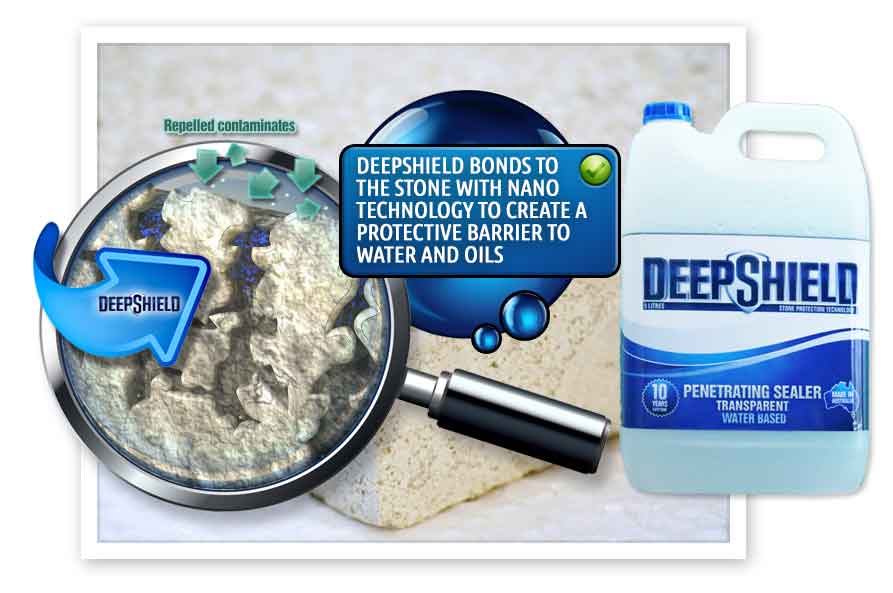
Several factors can contribute to efflorescence on natural stone, including:
- High humidity environments
- Condensation accumulation
- Precipitation such as rain or dew
- Saturation of groundwater
- Low temperatures




